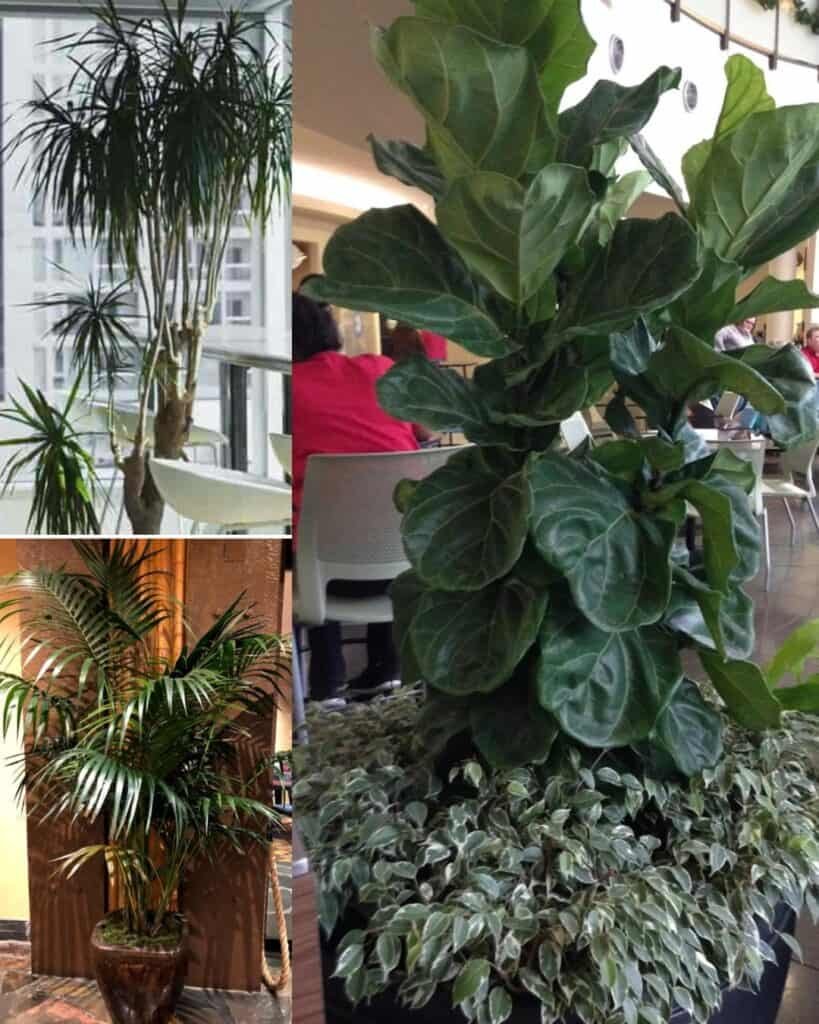Tall indoor plants and trees are a fantastic way to bring life, height, and vibrancy to your living spaces. These majestic beauties instantly elevate any room, creating a lush, tropical ambiance. From the stately fiddle-leaf fig to the graceful bird of paradise, many varieties thrive indoors and make stunning focal points.
Selecting the right plant for your home’s conditions will ensure your plants stay healthy and happy. Whether you have a spacious living room or a cozy apartment, there’s a tall houseplant perfect for your space. The following list of 11 tall indoor plants and trees will help you find the ideal options for your space and lifestyle.
Ficus Lyrata (Fiddle-Leaf Fig)
Botanical Name: Ficus Lyrata
Common Name: Fiddle-leaf Fig, Banjo Fig, Fiddle-leaved Fig Tree, Lyre Leaf Fig Tree, or Lyre-leaved Fig Tree
The Fiddle-leaf fig is a popular indoor plant that can be used as a striking focal point in a room. Its large, distinctive leaves make it a decorative piece that can add a lush, tropical feel to any indoor space while also purifying the air and providing numerous health benefits.
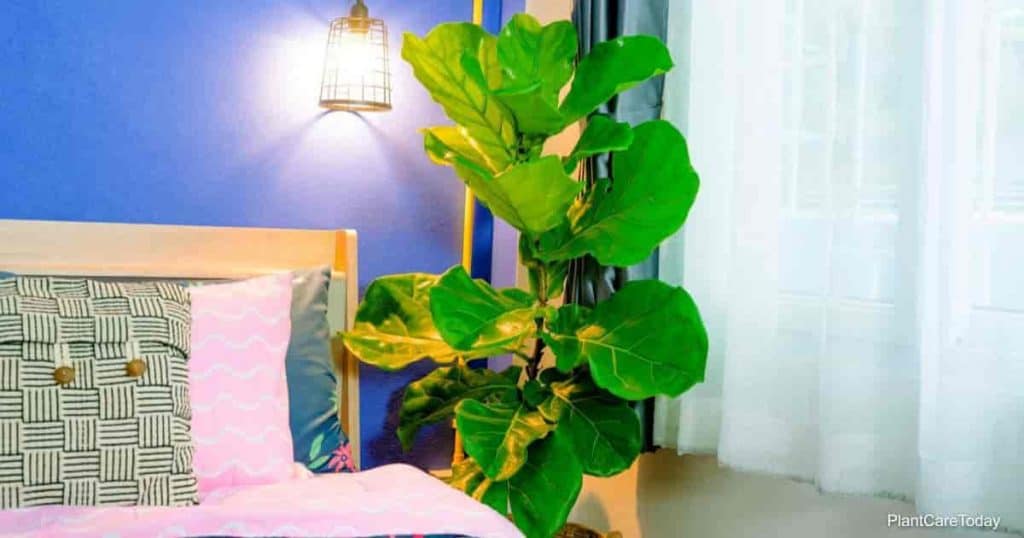

- Light Requirements: Bright, filtered light; place near a south, east, or west-facing window for optimal growth and leaf development.
- Maintenance Require: Regular watering, misting, and occasional pruning to maintain shape and encourage new growth.
- Pests Problems: Susceptible to spider mites, scale insects, and mealybugs
- Size & Growth Rate: Can grow up to 10 feet tall indoors; moderate growth rate, requiring ample space.
- Specific Environmental Needs: Prefers consistent temperature and humidity levels; avoids drafts and sudden changes to prevent stress and issues like browning or yellowing leaves.
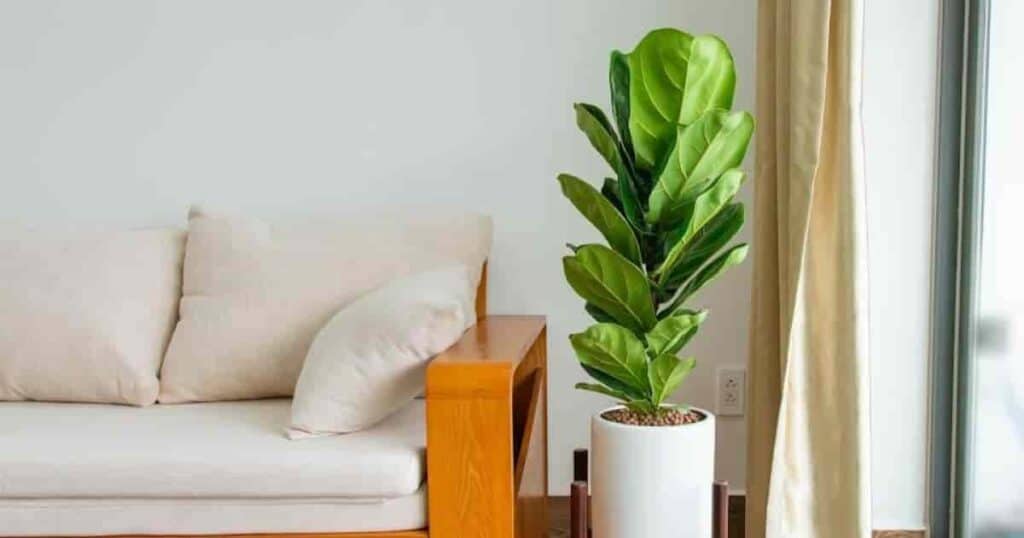

Howea Forsteriana (Kentia Palm)
Botanical Name: Howea forsteriana
Common Name: Kentia Palm, Thatch Palm, or Palm Court Palm
The Howea Forsteriana, or Kentia Palm, is a popular indoor plant that can add a touch of elegance and tropical flair to any space. Its large, graceful fronds help purify the air and contribute to a healthier indoor environment, making it a versatile decorative piece for homes and offices alike.
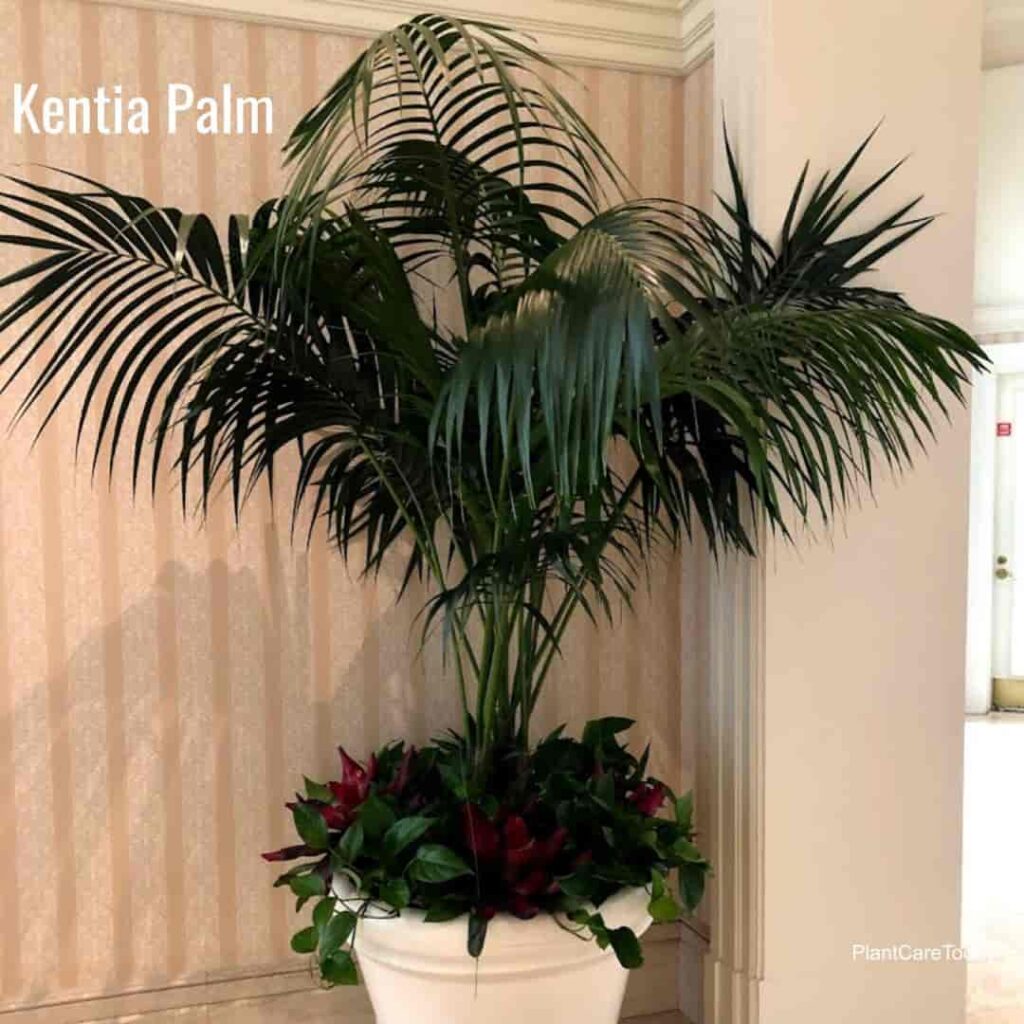

- Light Requirements: Bright, indirect light; tolerates some shade but may lose leaves in low light conditions.
- Maintenance Require: Regular watering, misting, and occasional pruning to remove dead or damaged fronds.
- Pests Problems: Susceptible to spider mites, scale insects, and mealybugs; monitor closely and treat promptly.
- Size & Growth Rate: Can reach up to 12′ feet tall indoors; slow to moderate growth rate.
- Specific Environmental Needs: Prefers consistent temperature and humidity levels; avoids drafts and sudden changes to prevent stress.
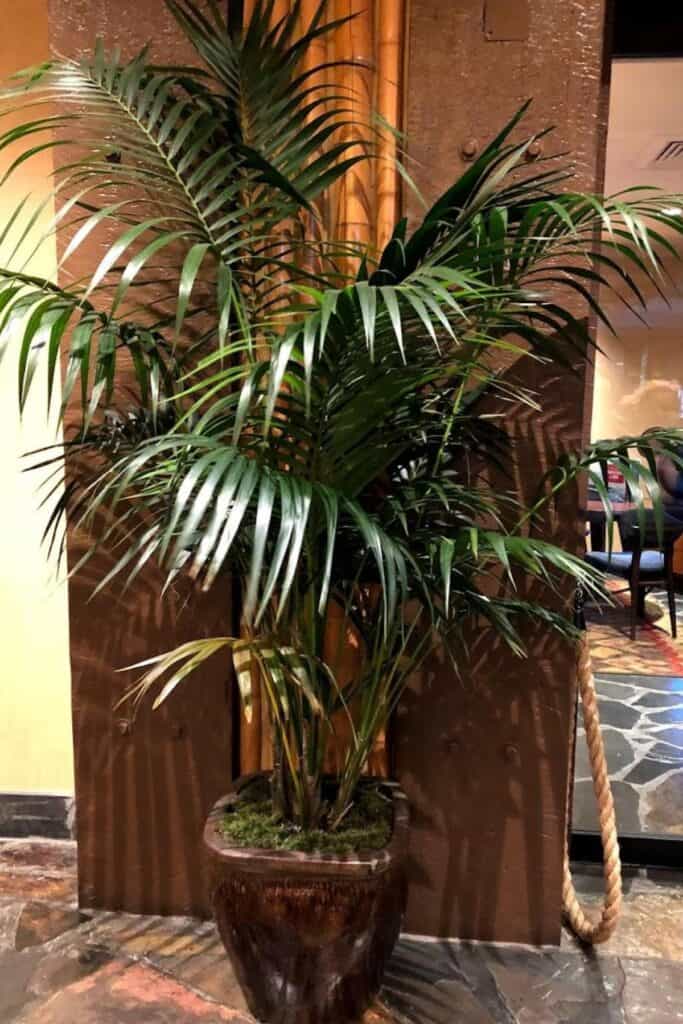

Chamaedorea Seifrizii (Bamboo Palm)
Botanical Name: Chamaedorea Seifrizii
Common Name: Bamboo Palm. Parlor Palm. Reed Palm
The Chamaedorea Seifrizii, commonly known as the Bamboo Palm, is a popular indoor plant that can add a touch of tropical elegance to any space.


Its slender, bamboo-like stems and graceful arching fronds make it a versatile decorative piece, while its air-purifying abilities help improve indoor air quality.
- Light Requirements: Bright, indirect light; tolerates some shade but may lose vigor and color.
- Maintenance Require: Regular watering, misting, and occasional pruning to remove dead or damaged fronds.
- Pests Problems: Susceptible to spider mites, scale insects, and mealybugs; monitor closely and treat promptly.
- Size & Growth Rate: Can reach up to 6 feet tall indoors; slow to moderate growth rate.
- Specific Environmental Needs: Prefers consistent temperature and humidity levels; avoids drafts and sudden changes to prevent stress.
Strelitzia Nicolai (White Bird-of-Paradise)
Botanical Name: Strelitzia Nicolai
Common Name: White Bird-of-paradise, Wild Banana, Giant Bird of Paradise
The White Bird-of-Paradise is a striking indoor plant known for its large, banana-like leaves and dramatic, upright growth habit. Its exotic appearance makes it a perfect specimen plant for entrances, patios, or as a focal point in any room.
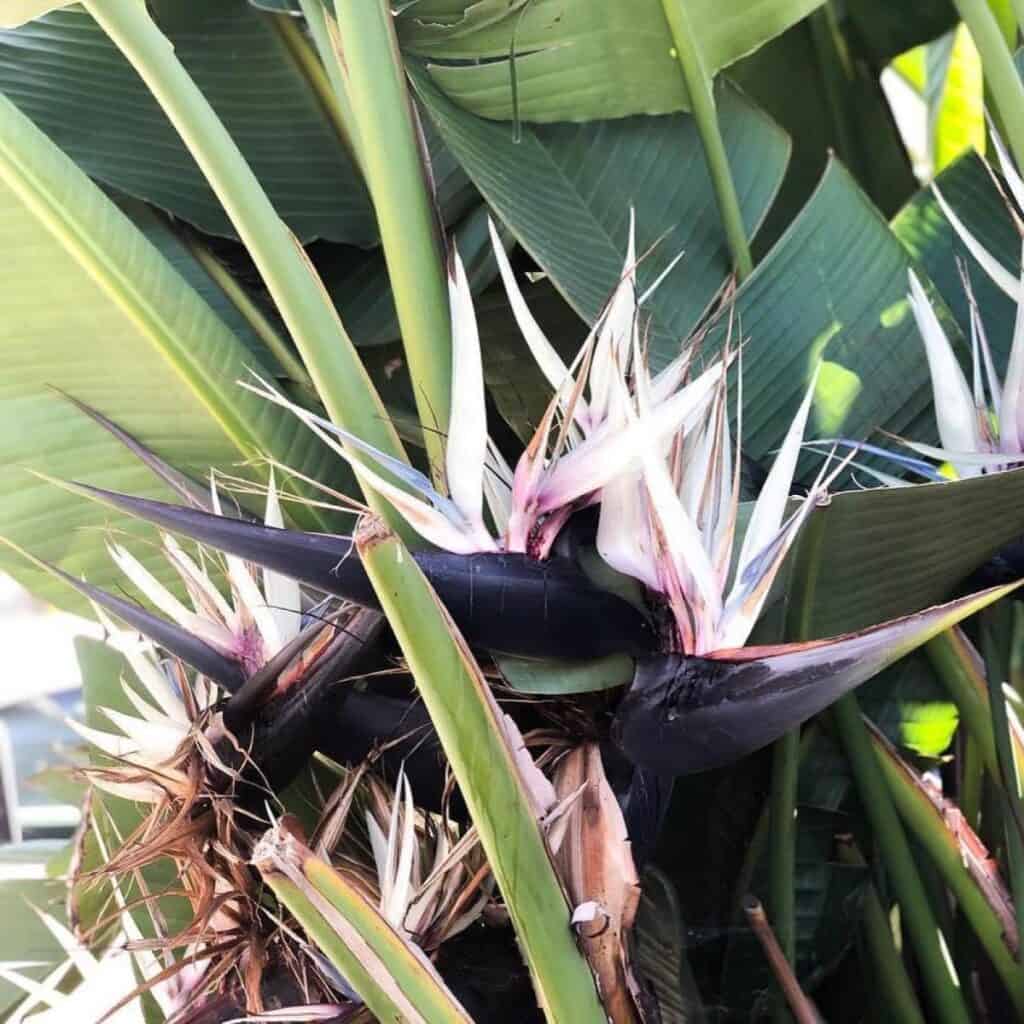

While it rarely flowers indoors, it helps purify the air and adds a touch of tropical elegance to any indoor space.
- Light Requirements: Bright, indirect light; tolerate some direct sun but may scorch leaves; avoid low light conditions.
- Maintenance Require: Regular watering, misting, and occasional pruning to maintain shape and size; fertilize during the growing season.
- Pests Problems: Susceptible to spider mites, scale insects, and mealybugs; monitor closely and treat promptly.
- Size & Growth Rate: It can reach up to 10 feet tall indoors, has a moderate to fast growth rate, and requires ample space.
- Specific Environmental Needs: Prefers warm temperatures between 65-80°F and high humidity; avoid cold drafts and sudden changes.
Cereus Peruvianus (Peruvian Apple Cactus)
Botanical Name: Cereus Peruvianus
Common Name: Peruvian Apple Cactus, Giant Club Cactus, Hedge Cactus, Apple Cactus, Queen of the Night
The Cereus Peruvianus, or Peruvian Apple Cactus, is a tall, columnar cactus known for its dramatic appearance and fragrant night-blooming flowers.
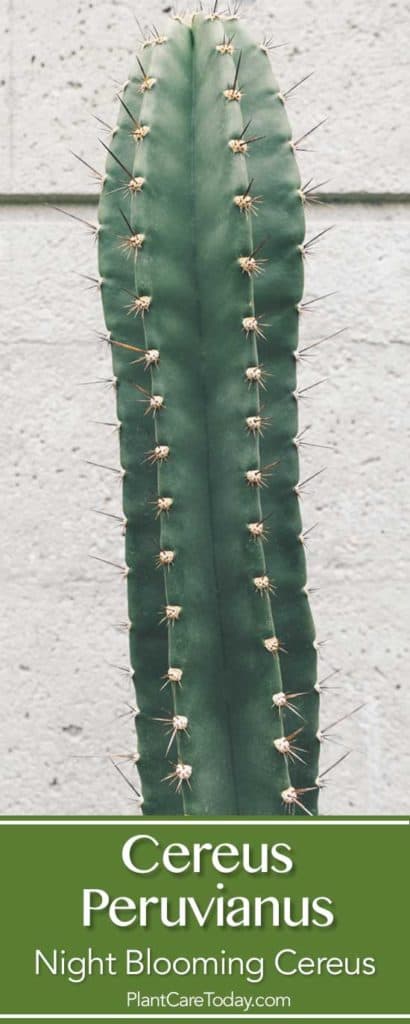

Its large size and unique shape make it a striking focal point for indoor spaces, while its air-purifying abilities can help improve a room’s overall atmosphere.
- Light Requirements: Full, direct sunlight; thrives in bright, south-facing windows or under grow lights.
- Maintenance Require: Infrequent watering; allow the soil to dry out between waterings; prune to maintain shape.
- Pests Problems: Relatively pest-resistant but may attract mealybugs or scale insects; monitor closely.
- Size & Growth Rate: Can reach up to 10 feet tall indoors; slow to moderate growth rate.
- Specific Environmental Needs: Prefers warm temperatures between 65-85°F and low humidity; avoid cold drafts.
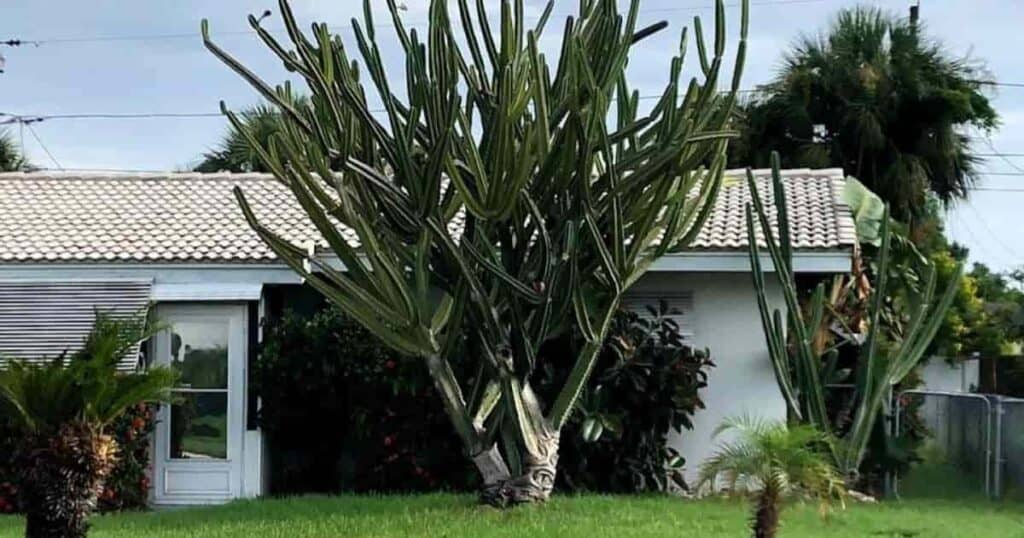

Euphorbia (Spurges)
Botanical Name: Euphorbia
Common Name: Poinsettia, Spurge, or Euphorbia
Euphorbias are a diverse group of succulent plants that can make striking indoor specimens. Their unique architectural forms and vibrant colors make them eye-catching decorative pieces, while their low-maintenance needs and air-purifying properties make them well-suited for various indoor spaces, from living rooms to offices.
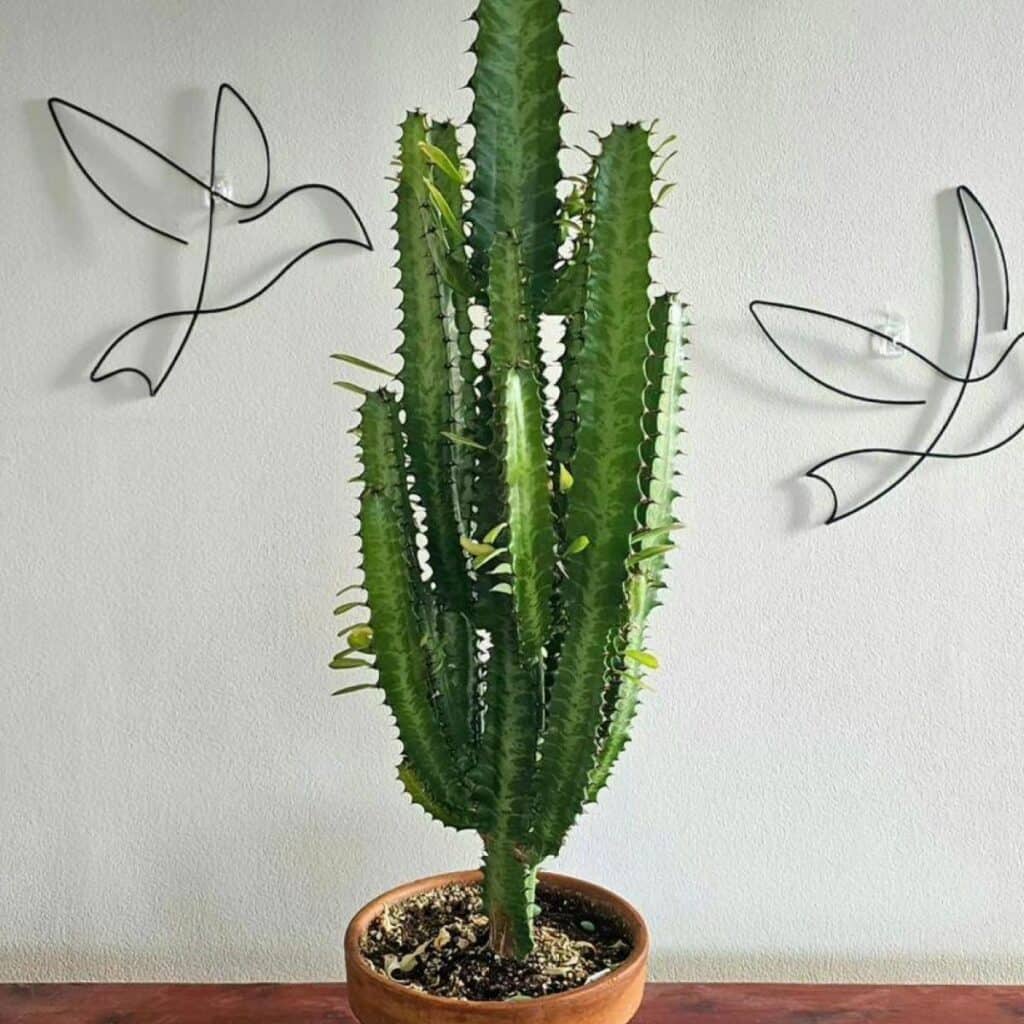

- Light Requirements: Full, direct sunlight; thrive in bright, south-facing windows or under grow lights.
- Maintenance Require: Infrequent watering, allowing the soil to dry out completely between waterings, and pruning to maintain shape.
- Pests Problems: Relatively pest-resistant but may attract mealybugs or scale insects; monitor closely.
- Size & Growth Rate: Its size and growth rate vary greatly depending on the species; it can range from small succulents to large, tree-like forms.
- Specific Environmental Needs: Prefer warm, dry conditions; avoid cold drafts and high humidity.
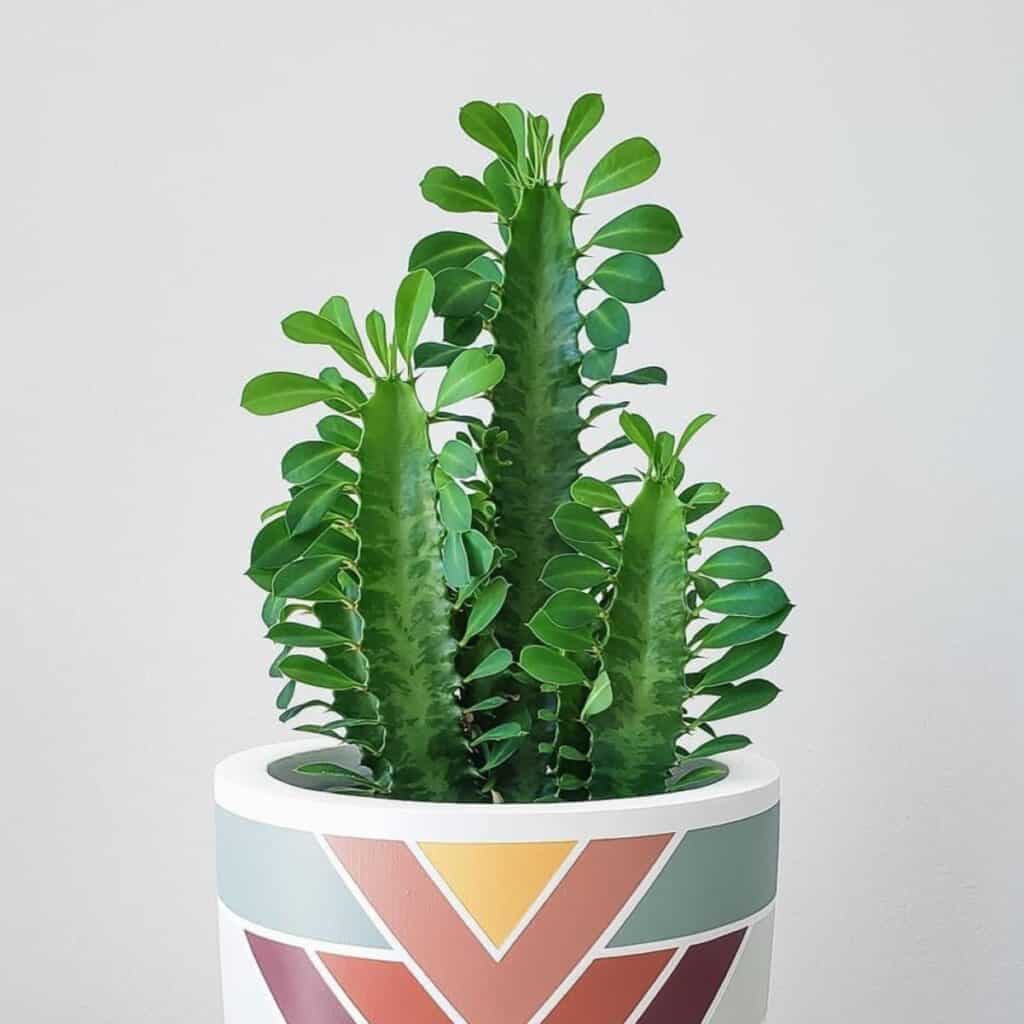

Rhapis Excelsa (Lady Palm)
Botanical Name: Rhapis Excelsa
Common Name: Ground Rattan, Bamboo Palm, Lady Palm, Miniature Fan Palm, Fern Rhapis
The Lady Palm is a compact, slow-growing indoor plant that thrives in low-light conditions, making it a versatile choice for decorating homes and offices.
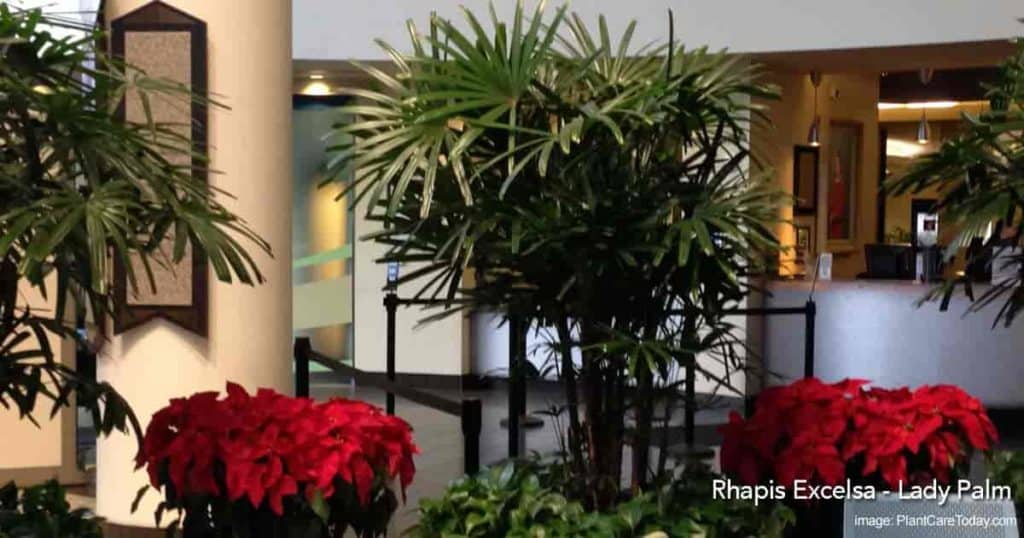

Its elegant, fan-shaped fronds and dense foliage add a touch of tropical flair and help purify the air by removing harmful toxins and increasing oxygen levels.
- Light Requirements: Tolerates low light conditions but prefers bright, indirect light for optimal growth.
- Maintenance Required: Regular watering, misting, and occasional pruning to maintain shape and remove dead fronds.
- Pests Problems: Relatively pest-resistant but may attract spider mites or scale insects; monitor closely.
- Size & Growth Rate: Compact, slow-growing plant; can reach up to 6 feet tall indoors.
- Specific Environmental Needs: Prefers moderate temperatures and humidity; avoids cold drafts and sudden changes.
Yucca (Common Yucca)
Botanical Name: Yucca
Common Name: Adam’s needle, Common Yucca, Spanish Bayonet, Bear-grass, Needle-palm, Silk-grass, and Spoon-leaf Yucca
The Yucca plant, with its striking sword-shaped leaves, beautiful flowers, and majestic structure, makes a bold statement as an indoor decoration.
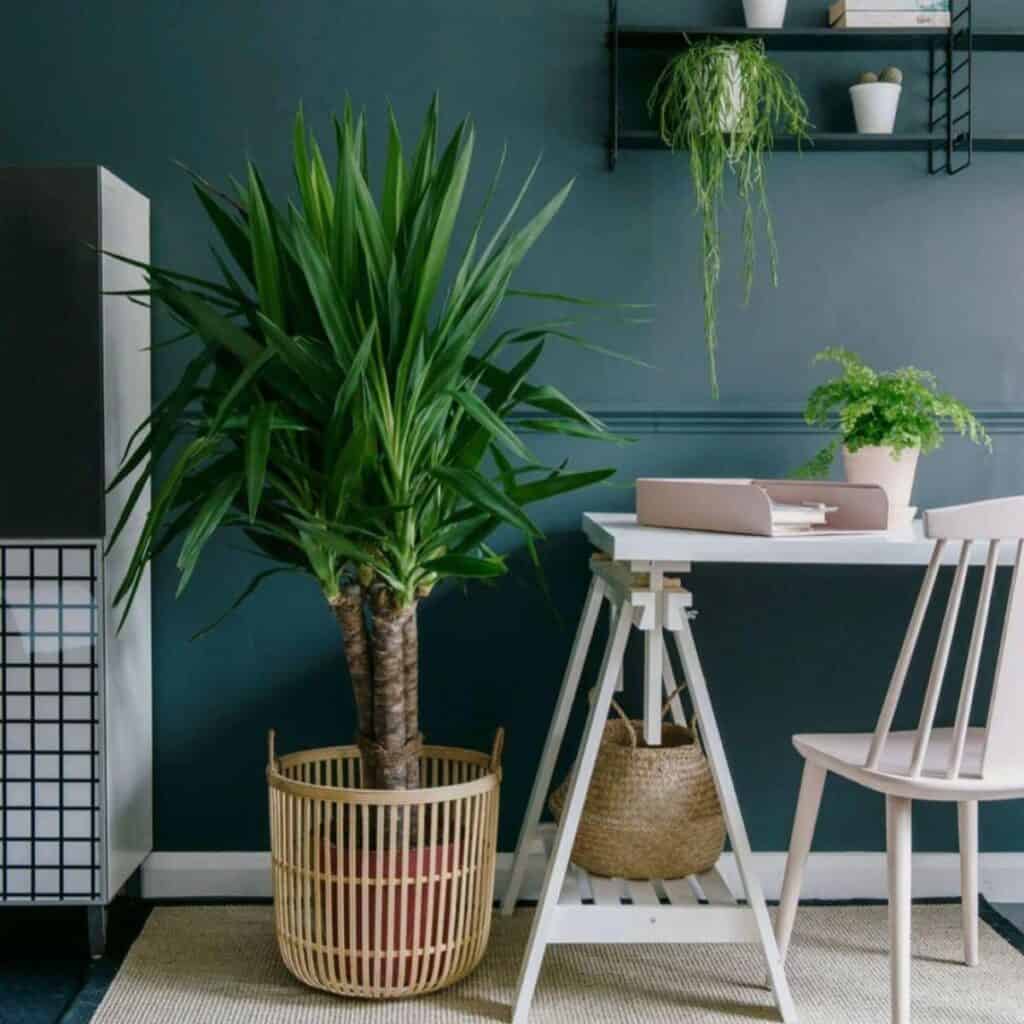

Its low-maintenance nature and air-purifying properties make it well-suited for styling up green corners in living rooms, offices, or entryways, adding a touch of tropical flair to any indoor space.
- Light Requirements: Full, direct sunlight; thrives in bright, south-facing windows or under grow lights.
- Maintenance Require: Infrequent watering, allowing soil to dry out completely between waterings, and pruning dead or damaged leaves.
- Pests Problems: Relatively pest-resistant but may attract mealybugs or scale insects; monitor closely.
- Size & Growth Rate: It can reach up to 10 feet tall indoors, but its growth rate is slow to moderate.
- Specific Environmental Needs: Prefer warm, dry conditions; avoid cold drafts and high humidity.
Dracaena Marginata (Madagascar Dragon Tree)
Botanical Name: Dracaena Marginata
Common Name: Dragon Tree, Madagascar Dracaena
The Dracaena Marginata is a popular indoor plant prized for its striking, variegated foliage. Its elegant, upright growth habit makes it a decorative piece that adds a tropical flair to living rooms, offices, or entryways.


This plant helps improve air quality and promote a healthier indoor environment by removing common indoor pollutants.
- Light Requirements: Bright, indirect light; can tolerate some direct sun but may scorch leaves.
- Maintenance Require: Regular watering, misting, balanced fertilizer, and occasional pruning to maintain shape and encourage new growth.
- Pests Problems: Susceptible to pests like spider mites, scale insects, and mealybugs; monitor closely and treat promptly.
- Size & Growth Rate: Can reach up to 6 feet tall indoors; moderate growth rate when provided proper care.
- Specific Environmental Needs: Prefers moderate temperatures and humidity; avoids cold drafts and sudden changes.
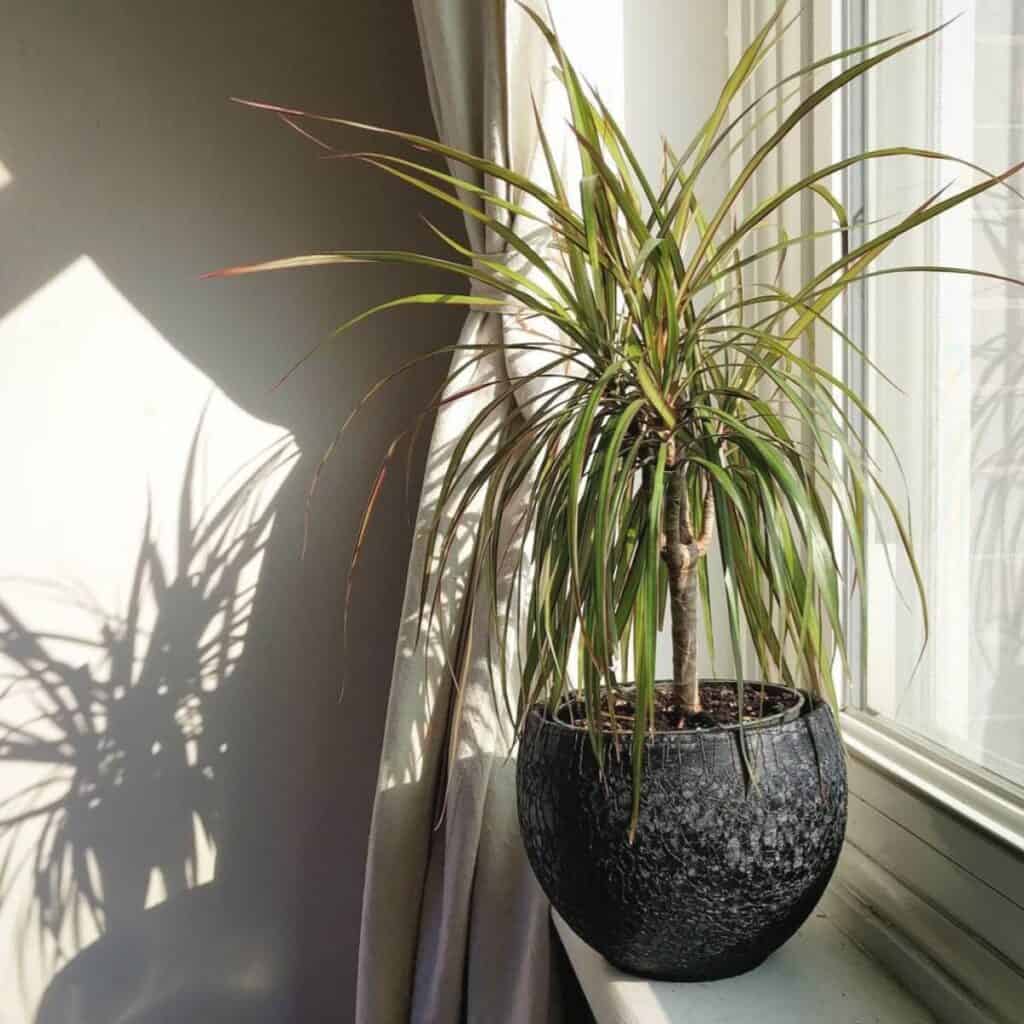

Dracaena Fragrans (Corn Plant)
Botanical Name: Dracaena Fragrans
Common Name: Corn Palm, Palmillo, Fortune Plant, Corn Plant, Senjuang Wangi, Dragon Plant, Iron Plant
The Dracaena Fragrans is a popular indoor plant prized for its elegant, variegated foliage and air-purifying abilities. Its upright, compact growth habit makes it a versatile decorative piece that can add a touch of tropical flair to living rooms, offices, or entryways while helping to remove common indoor pollutants and improve overall air quality.
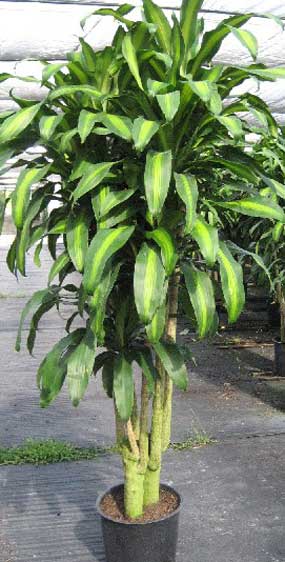

- Light Requirements: Bright, indirect light; can tolerate some direct sun but may scorch leaves.
- Maintenance Require: Regular watering, misting, and occasional pruning to maintain shape and encourage new growth.
- Pests Problems: Susceptible to spider mites, scale insects, and mealybugs; monitor closely and treat promptly.
- Size & Growth Rate: Can reach up to 8 feet tall indoors; moderate growth rate with proper care.
- Specific Environmental Needs: Prefers moderate temperatures and humidity; avoids cold drafts and sudden changes.
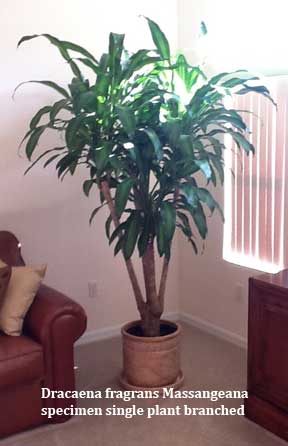

Ficus Elastica (Rubber Plant)
Botanical Name: Ficus Elastica
Common Name: Rubber Plant
The Rubber Tree is a popular indoor plant prized for its large, glossy leaves and air-purifying abilities. Its upright growth habit and tolerance for low light conditions make it a versatile decorative piece that can add a tropical touch to living rooms, offices, or entryways while helping to remove common indoor pollutants.
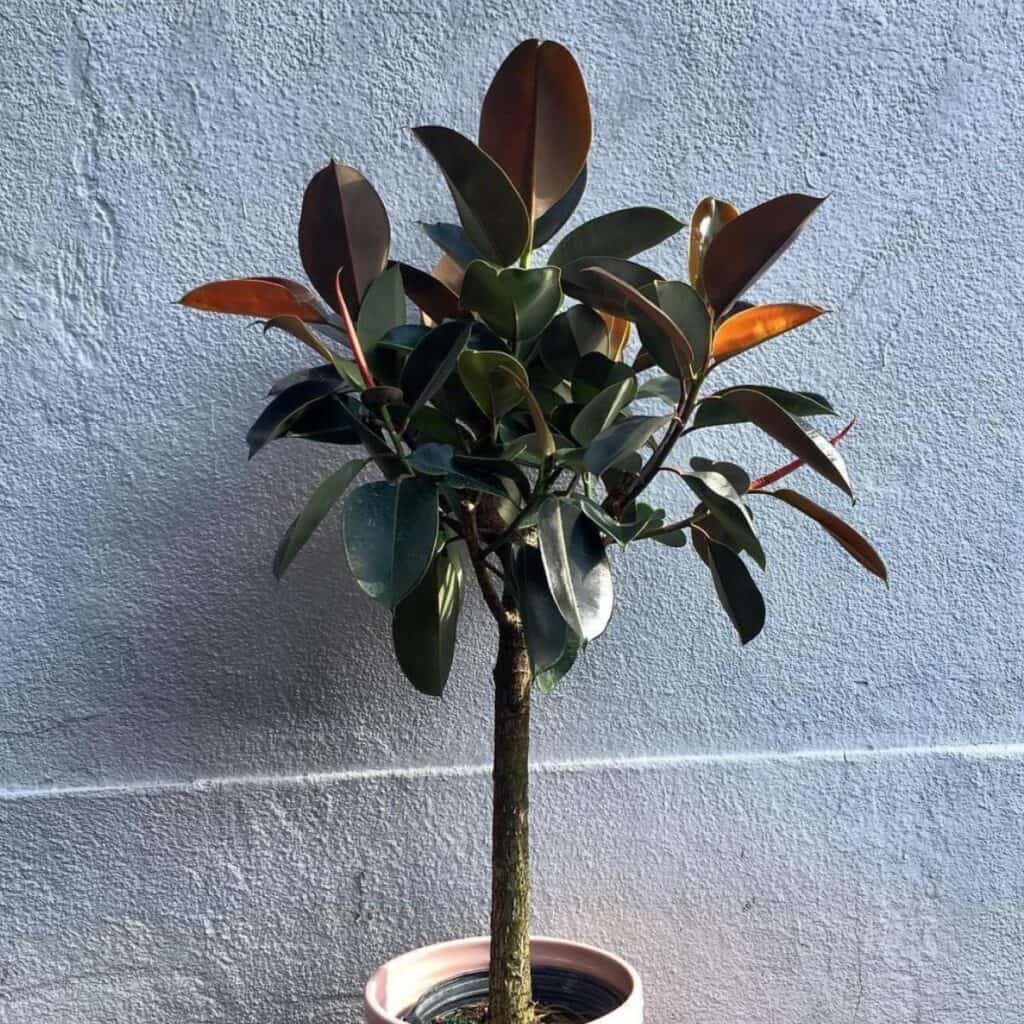

- Light Requirements: Bright, indirect light; can tolerate some direct sun but may scorch leaves.
- Maintenance Require: Regular watering, misting, and occasional pruning to maintain shape and encourage new growth.
- Pests Problems: Susceptible to spider mites, scale insects, and mealybugs; monitor closely and treat promptly.
- Size & Growth Rate: Can reach up to 10 feet tall indoors; moderate to fast growth rate with proper care.
- Specific Environmental Needs: Prefers warm temperatures and moderate humidity; avoid cold drafts and sudden changes to prevent issues like shock.


Houseplants are a great way to bring nature into your home. Tall indoor plants can make a big impact, adding height and lushness to any room, whether you have high ceilings or a small corner that needs extra flair.
In addition to their beauty, these plants help clean the air, removing toxins and improving air quality. These lush greeneries absorb carbon dioxide and release oxygen, helping improve your home’s air quality.
They can also remove harmful toxins and pollutants, such as benzene, formaldehyde, and trichloroethylene, often found in household products and furnishings. They can also help reduce noise and increase humidity indoors, creating a healthier and more pleasant living environment.
When selecting tall indoor plants and trees, choosing species well-suited to your home’s specific conditions is important. Factors such as light, temperature, and humidity should be considered to ensure the plants thrive and continue providing their many benefits.
Consulting with a local nursery or plant expert can help you make the best choices for your indoor environment.
By incorporating tall indoor plants and trees into your living spaces, you can enjoy a range of benefits that can improve your overall health and well-being and the overall ambiance of your home.
